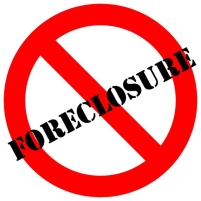How Did Canada Avoid Foreclosures and Bank Failures that Devastated U.S.?
Friday, January 14, 2011

Perhaps Americans can learn something from their northern neighbor regarding home finance and staving off mortgage disasters.
While the U.S. has struggled with its crippled housing market since 2008, Canada is doing just fine. Not a single Canadian bank has failed in recent years, and less than 1% of all Canadian mortgages are in arrears.
Contrast that with the situation in the U.S., where one quarter of all homes are estimated to be worth less that the mortgage being paid on them. Not to mention the unprecedented government bailout of Wall Street investment banks and the collapse of more than 300 smaller financial institutions.
Yes, Canada is considerably smaller than the U.S., in terms of population (34 million vs. 307 million) and size of economy (America No. 1; Canada No. 9).
But in terms of home ownership, Canada is equal to or greater than the U.S. rate.
Canada is doing something right with respect to its financial sector. Canadian banks were recently rated the best in the world by the World Economic Forum. Their banks also adhere to a conservative regulatory system, which requires more rigorous loan-underwriting standards and larger reserves by banks for bad economic times, compared to the looser rules followed U.S. institutions.
Canada also does not allow homeowners to deduct mortgage interest from their income taxes. Instead, Canadians receive a capital gains tax exemption on any profits from selling their property.
Furthermore, there’s no equivalent of Fannie Mae or Freddie Mac in Canada. The existence of a secondary market for mortgages in the U.S. was supposed to help banks by taking loans off their books. These days Fannie and Freddie are struggling to do much of anything, having depended on billions in rescue funds from Uncle Sam to stay afloat.
-Noel Brinkerhoff
Few Foreclosures, No Bank Failures: Canada Offers Lessons (by Kevin Hall, McClatchy Newspapers)
- Top Stories
- Unusual News
- Where is the Money Going?
- Controversies
- U.S. and the World
- Appointments and Resignations
- Latest News
- Trump to Stop Deportations If…
- Trump Denounces World Series
- What If China Invaded the United States?
- Donald Trump Has a Mental Health Problem and It Has a Name
- Trump Goes on Renaming Frenzy






Comments